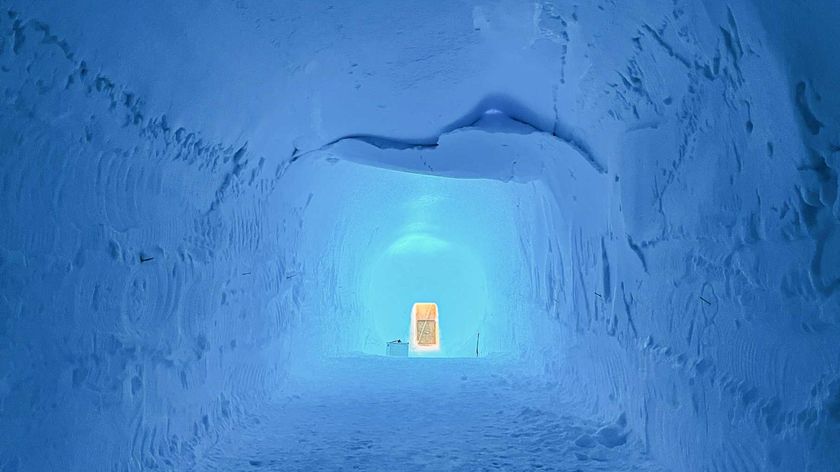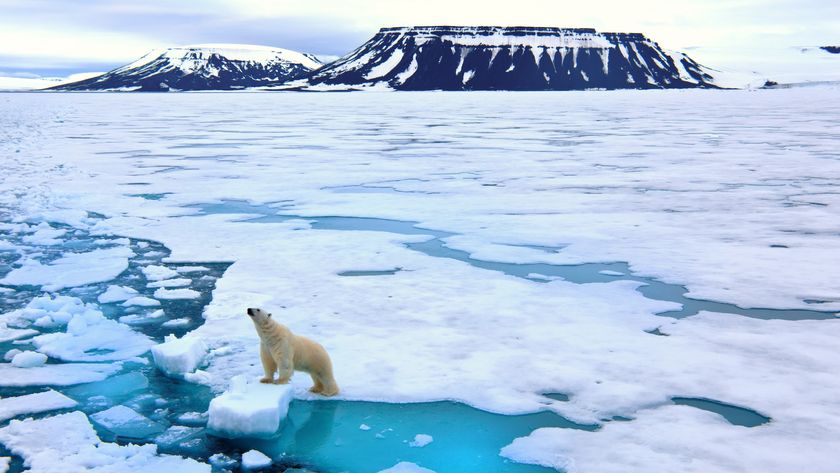
Massive Greenland Iceberg Floats Into Arctic Strait
The giant iceberg that calved from Greenland's Petermann glacier on Aug. 5 is now entering the Nares Strait a stretch of water that connects the Lincoln Sea and Arctic Ocean with Baffin Bay.
Petermann Glacier is one of the two largest remaining glaciers in Greenland that terminate in floating shelves. The glacier connects the great Greenland ice sheet directly with the ocean.
When the chunk of ice four times the size of Manhattan broke off, the Petermann Glacier lost about one-quarter of its 43-mile- (70-kilometer-) long floating ice shelf, according to researchers at the University of Delaware.
The recently calved iceberg is the largest to form in the Arctic in 50 years.
On Sept. 1, imagery showed that the iceberg had traveled almost another 4 miles (6 km) from the edge of the glacier and rotated westward (about 3 degrees), just tipping into Nares Strait. The iceberg hit a small island, which may delay further progression for a short while and may also cause the iceberg to break.
The iceberg will soon be fully in Nares Strait, experts say, but its course depends on winds blowing off the glacier and currents in the strait, as well as sea ice that could block its path.
"The newly born ice-island may become land-fast, block the channel, or it may break into smaller pieces as it is propelled south by the prevailing ocean currents. From there, it will likely follow along the coasts of Baffin Island and Labrador, to reach the Atlantic within the next two years," said Andreas Muenchow, associate professor of physical ocean science and engineering at the University of Delaware.
Sign up for the Live Science daily newsletter now
Get the world’s most fascinating discoveries delivered straight to your inbox.
The Petermann glacier regularly advances towards the sea at about 0.62 miles (1 km) per year. Calvings from the glacier are quite common, but one of this magnitude is rare.
The last time such a massive ice island formed was in 1962 when Ward Hunt Ice Shelf calved a 230 square-mile (600 square-km) island, smaller pieces of which became lodged between real islands inside Nares Strait. Petermann Glacier spawned smaller ice islands in 2001 (34 square miles, or 88 square km) and 2008 (10 square miles, or 26 square km). In 2005, the Ayles Ice Shelf disintegrated and became an ice island (34 square miles) about 60 miles (97 km) to the west of Petermann Fjord. Less significant events took place in 2001, in 2008 when a 10-square-mile (27-square-km) iceberg made its way south to Davis Strait, and in 2009.
This iceberg is about 19 miles (30 km) long and 9 miles (15 km wide) at its foot and almost 4 miles (7 km) wide at its head, covering an area of around 95 square miles (245 square km).
By Aug. 22 this giant mass of ice had been carried about 14 miles (22 km) from its birth place.












